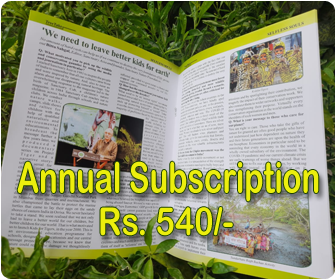Know Your Pooch
VK Joshi
The writer is former director, GSI, and an avid animal lover. His understanding of man's best friend comes from over six decades of dedicated association with it
Owning a dog is a pleasure. Especially if you have a well-behaved and well-trained dog, then he is a neighbour’s envy and owner’s pride! But unfortunately, if you have unknowingly acquired an aggressive dog, then you have it. Not only will the neighbours hate you, but even the maids and visitors to your house will stop coming.
What to do in case your dog turns aggressive. The cute, cuddly pup, after he turns four months, suddenly starts baring his fangs and shows symptoms of aggression, and in another four months, becomes a professional biter. I have seen a playful, cuddly Doberman puppy turn aggressive and vicious at the age of four months.
Why do they turn aggressive? Before dealing with cures, let me share some reasons for aggression in dogs. They are:
Fear or anxiety,
Territorial behaviour,
Protective instinct,
Pain or health issues,
Frustration or lack of exercise,
Poor socialisation.
An expert can easily identify the cause. For example, I had a stock of the finest Labrador Retriever from a renowned Kennel in England. The parents of the pup were dual Champions, i.e. breed and obedience champions. A socialite lady had bought the eight-week-old pup from me. The first thing she uttered on meeting me was. ‘You have given me a highly aggressive pup, and he even attacked me last night.’ I kept my cool and requested her to put the pup on the ground. The moment he identified his birthplace, he began rushing towards the kennels. I found he was badly limping.
I asked her, ‘Why is he limping?’
‘Because you palmed off a lame puppy to me, and when I or any servant try to look for the cause, he charges at us and often bites.’
To me, the picture was clear in a moment, and I held the puppy in my lap, caressing him all the time and examined his rear left feet by spreading the digits of the paw. And there it was, a rose thorn was embedded there. I called my helper and we managed to pull out the thorn and checked the bleeding with cotton wool dipped in an antiseptic. In a few minutes, the pup was running and playing with his new owner. The thorn was the root cause of pain, followed by aggression!
Many puppies are ruined by ignorant owners who shout at them or hit them for reasons that the puppies can’t understand. Very often, people acquire a dog of a particular breed as a status symbol or fall for the sheer beauty and forget that the apartment they are living in is tiny for a dog of that breed. For example, an Alsatian is a Sheepdog and needs to walk a lot to guard the sheep. This character is deeply ingrained in his genes. The owners are unaware of this requirement and remain mostly indoors. They send the dog downstairs with a servant or a dog walker, who walks the dog less, because he is too busy with his own cell phone. The poor dog, out of sheer frustration and boredom, turns aggressive. Mind you, a small breed like a Pomeranian needs a minimum of 40 square feet of area as its own space. In a flat of 1500 sq feet, even that much area cannot be exclusively left free for the dog. The dog, after maturity, finds the confinement too much and turns aggressive.
Last but not the least reason is poor socialisation. A pup comes from its own world of sounds. When exposed to sounds, all of a sudden, which he is not used to, the pup/dog gets bewildered and over a period of time, turns aggressive. Aggression is one trait which is often genetically carried by some breeds. Thus, if you are buying a pedigreed dog from an unknown breeder, it is better to get the pedigree studied by experts to evaluate the genetic chances of aggression.
The main issue faced by novice owners is how to control aggression. As a first step, I have already enumerated the causes of aggression in dogs. First, rule out those causes. For example, if a dog is sick and not eating food and is rather sulking in a corner, he may attack if you try to cajole him to eat!
Positive reinforcement is the expression used to control aggression in dogs. For example, a reward-based training programme is very useful. A reward in the form of a titbit for every command obeyed goes a long way. The commands of Stay and Come are quite useful in controlling such dogs. The training sessions should be lively, with no chance of any anger from either side. For example, if the dog growls when called, don’t shout at him. Instead, get his choke collar and long leash and using the command, give a tug to the leash. If the dog is fit, 99% chances are that he will come to you. Reward him immediately. If he doesn’t come, don’t lose your temper. Maybe he has a pain in his leg, or he has had lots of exercise and doesn’t feel like moving. Just ignore him and leave him. You will notice after a while that he will come back to you with his tail wagging. Reward him immediately and make a fuss with him.
Once you know the situations that trigger aggression, manage them well in time. Some dogs hate a particular postman/person/sound. When you anticipate such a situation, move him away beforehand. Remember, if the cause of aggression is due to some health issue or genetic, your Vet will be able to help. There are safe medicines available now that make the dog calm and easy to handle and train. The Vet is the best person to decide.
And lastly, controlling aggression in dogs involves understanding the root cause, implementing positive training techniques, managing their environment, and seeking professional guidance when needed. With patience and commitment, most aggressive behaviours can be effectively managed, leading to a safer and happier relationship with your furry friend.















Leave a comment